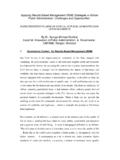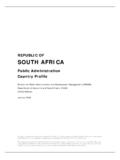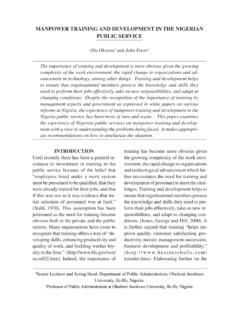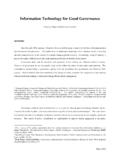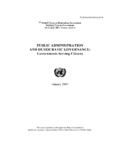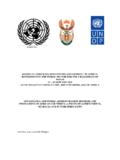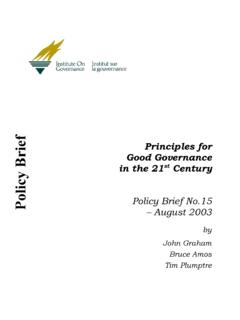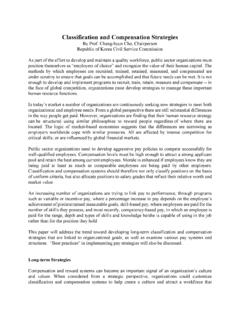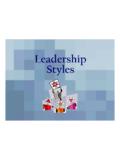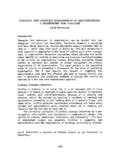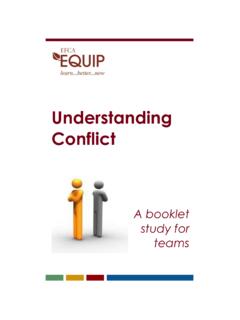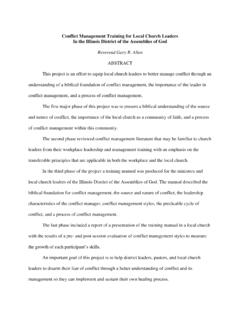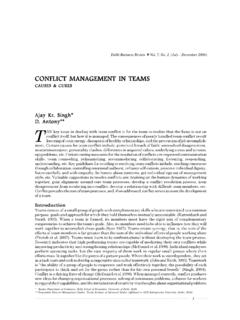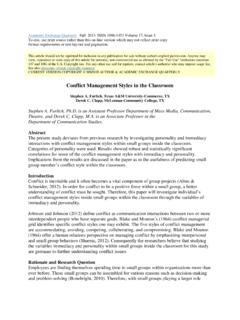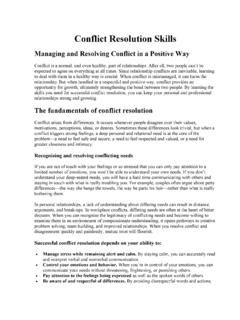Transcription of Skills Development for Conflict Transformation
1 Skills Development for Conflict Transformation A training manual on understanding Conflict , negotiation and mediation This workshop manual, aimed at strengthening national capacities for handling Conflict , was prepared with the support of the Conflict management Capacity Building Project of the United Nations Department of Economic and Social Affairs, Division for Public Administration and Development management UNDESA/UNDP and The Centre for Conflict Resolution CONTENTS Page 1 Conflict 2 Nature of Conflict 3 Functions of Conflict 4 Conflict Resolution.
2 Terms and Definitions 6 What causes Disputes and Conflict ? 7 The Circle of Conflict 8 The Relationship between Conflict and Human Rights 9 The Relationship between Human Rights and Human Needs 11 2 NEGOTIATION 14 What is Negotiation? 15 Strategies and Outcomes of a Dispute 16 Position and Interests 17 Positional Negotiation 18 Interest-based Negotiation
3 21 3 COMMUNICATION 23 What is Communication? 24 Active Listening 24 Paraphrasing 26 Honest Communication
4 28 Framing and Reframing: Moving beyond Rhetoric and Threats 30 4 MEDIATION 32 What is Mediation? 33 Roles played in Conflict Situations 34 Stages of the Mediation Process 36 Stage 1: Introduction 36 Stage 2: Conflict description 40 Stage 3.
5 Problem solving 41 Stage 4: Agreement 49 Cultural Aspects Influencing Conflict Resolution 50 Convening Multi-party Stakeholder Negotiations 51 BIBLIOGRAPHY 54 Conflict NATURE OF Conflict Conflict is a natural and necessary part of our lives Whether at home with
6 Our families, at work with colleagues or in negotiations between governments, Conflict pervades our relationships. The paradox of Conflict is that it is both the force that can tear relationships apart and the force that binds them together. This dual nature of Conflict makes it an important concept to study and understand. Conflict is an inevitable and necessary feature of domestic and international relations. The challenge facing governments is not the elimination of Conflict , but rather, how to effectively address Conflict when it arises. While most government officials in Africa are not frequently confronted by large-scale violence or humanitarian crises, they are often involved in lesser but nevertheless serious conflicts over trade, refugees, borders, water, defence, etc.
7 Their government may be party to the Conflict or called on to serve as mediator. In either case, they require particular Skills and techniques to tackle the issues in a constructive fashion. Conflict can be managed negatively through avoidance at one extreme and the use or threat of force at the other. Alternatively, Conflict can be managed positively through negotiation, joint problem-solving and consensus-building. These options help build and sustain constructive bilateral and multi-lateral relations. Good Conflict management is both a science and an art We have all learned responses to confrontation, threats, anger and unfair treatment. Some of our learned responses are constructive, but others can escalate Conflict and raise the level of danger.
8 How we choose to handle a confrontation is largely based upon our past experience in dealing with Conflict and our confidence in addressing it. One can start to change destructive responses to Conflict by learning to assess the total impact of negative responses and acquiring confidence in using the tools and techniques of professional peacemakers. Constructive Conflict management is as much a science as an art. It is based on a substantial body of theory, Skills and techniques developed from decades of experience in international peacekeeping, peacemaking and peacebuilding. Acquiring a better understanding of the conceptual tools and Skills professional Conflict managers use can help us gain confidence in addressing Conflict in a manner which resolves the issues and maintains or even strengthens relationships.
9 While we may not all go on to become professional peacemakers, these Skills and knowledge can help us in any social setting. These tools can help for example, government officials, address disputes more quickly and effectively, preventing them from growing into domestic or international crises. Peace The distinction is sometimes made between negative peace and positive peace ( Galtung 1996). Negative peace refers to the absence of violence. When, for example, a ceasefire is enacted, a negative peace will ensue. It is negative because something undesirable stopped happening ( the violence stopped, the oppression ended). Positive peace is filled with positive content such as the restoration of relationships, the creation of social systems that serve the needs of the whole population and the constructive resolution of Conflict .
10 Peace does not mean the total absence of any Conflict . It means the absence of violence in all its forms and the unfolding of Conflict in a constructive way. Peace therefore exists where people are interacting non-violently and are managing their Conflict positively - with respectful attention to the legitimate needs and interests of all concerned. Reconciliation Reconciliation becomes necessary when negative Conflict has occurred and relationships have been damaged. Reconciliation is especially important in situations of high interdependence where a complete physical or emotional barrier between parties in a Conflict cannot be maintained. Reconciliation therefore refers to the restoration of relationships to a level where co-operation and trust become possible again.
